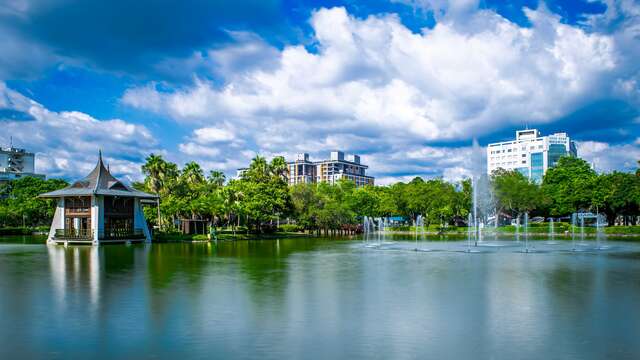Taichung Park Introduction
Taichung Park, the first centennial park in Taiwan, has been a landmark of Taichung City for over a hundred years. The park is lush with greenery and features elements of history, culture, and wildlife. It is often said, "The previous generation plants trees, and the next generation enjoys their shade." Finding a green oasis like Taichung Park in urban Taiwan is quite rare, and the poetic scenery cultivated over countless years allows later generations to find a natural retreat without spending much or driving far to the mountains or rivers when they feel tired. For many Taichung residents, Taichung Park has long been a favorite spot for recreation and relaxation from childhood to adulthood, whether it’s exercising, rowing on the pavilion in the lake, enjoying warm family gatherings, or providing a quiet corner for couples to express their love. For travelers, Taichung Park is a landmark of Taichung, being the first centennial park in Taiwan, rich in ancient relics and conveniently located for visiting bustling night markets and train stations. It offers an array of hotels, restaurants, and snacks, making it one of the best spots for both dynamic and tranquil experiences. The Huxin Pavilion is an European-style building constructed in 1908 (the 41st year of the Meiji era) to celebrate the inauguration of the entire trunk railway. It was where Prince Kuni Kuniyoshi, who was in Taiwan at the time, stayed overnight, and the pavilion gained substantial fame as a result. Since the Japanese colonial period, Huxin Pavilion has symbolized Taichung City and was officially designated as a "City-designated Historical Site" on April 17, 1999, encompassing the pavilion and the nearby Zhongshan Bridge. The Wangyue Pavilion was built in 1889 (the 15th year of the Guangxu era) and is the only remaining relic of the old Tainan City. The Qing dynasty established a provincial government in Taiwan, and Governor Liu Mingchuan made Taichung the capital of Taiwan, leading to the construction of eight city gates and four towers. The Wangyue Pavilion is the sole surviving building of the northern gate among these eight city gates. Over time, most of the old towers were almost completely destroyed during the Japanese colonial period, leaving only the surviving Wangyue Pavilion. The plaque in the pavilion reading "Music to Welcome the Gods," was inscribed by Taiwan's magistrate Huang Cheng-yi and is a historic artifact over a hundred years old, making it the oldest memorial in Taichung Park. Currently, a replica is displayed on-site, with the original artifact temporarily stored in the Nioumatou Cultural Park. The Geng Pavilion originally served as the main gate of the Wu Luanqi Mansion, which was demolished around 1980. To preserve the historical monument, the Taichung City Government relocated the Geng Pavilion to Taichung Park, making it the only remaining traditional Chinese pavilion in Taiwan.









































